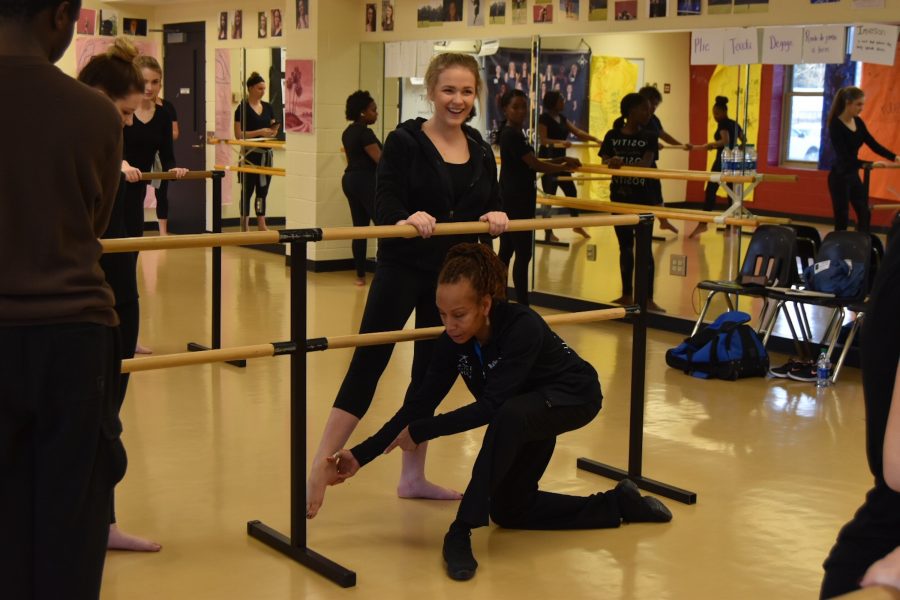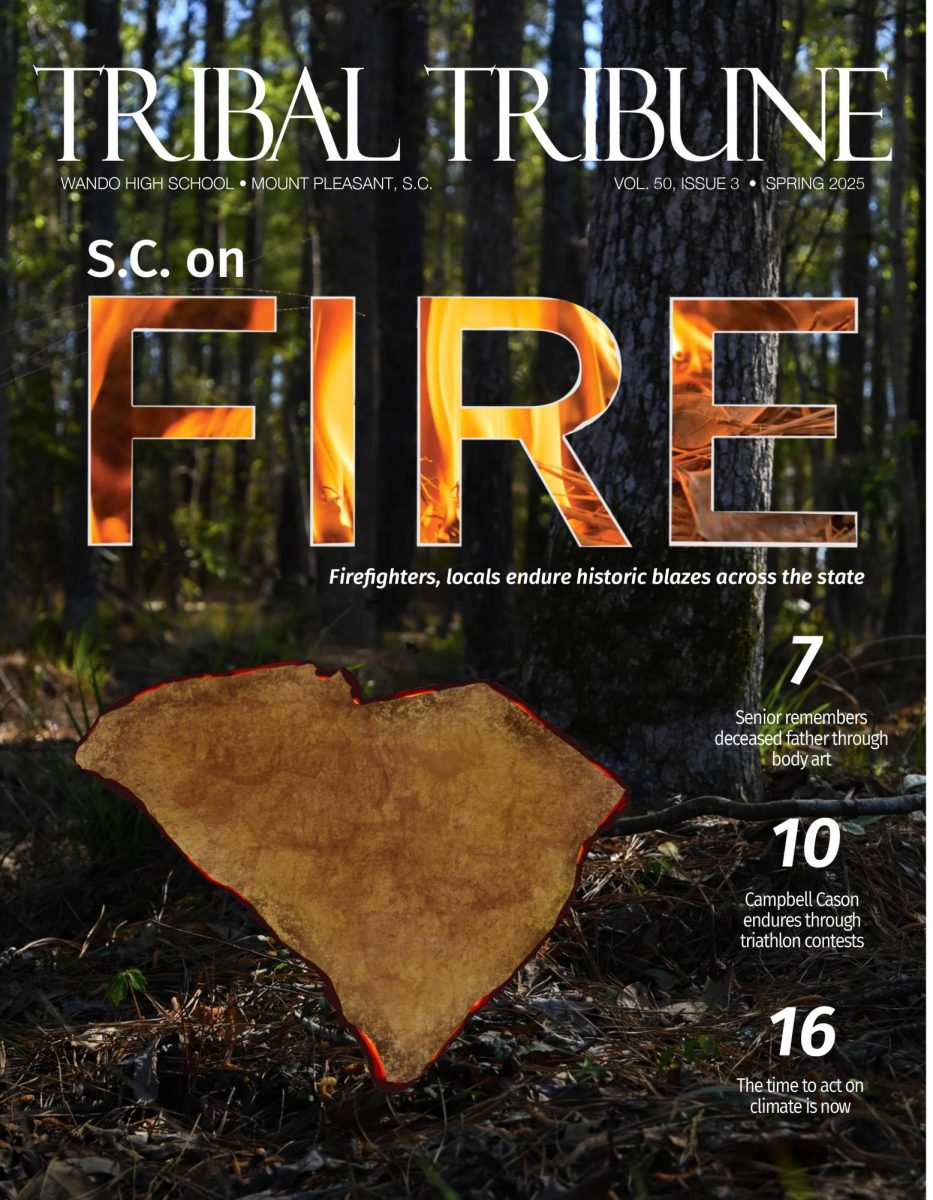Dance Theatre of Harlem Visits with Educational Outreach
February 13, 2017
Prestigious. Powerful. Diverse.
This is the Dance Theatre of Harlem or DTH.
On a tour across the country, the New York based ballet company of 48 years stopped in Charleston as part of a funded grant performance with the National Endowment for the Arts and other arts organizations.
Part of Dance Theatre of Harlem’s mission, is to give back and provide education for young students. Kellye Saunders, current Ballet Master with DTH and has been with the company since 1985, taught the Intro to Dance class on Feb. 7.
“One thing I love to do at Dance Theatre is part of our mission is not only to perform and show people the wonderful joy of movement through ballet, but also to educate the young people,” Saunders said. “And to hopefully instill the joy and love of art and movement to the next generation.”
The DTH’s visit to Charleston was different from a usual tour stop. Originally doing a full tour in 2016, their scheduled visit to Wando and a performance at the Gaillard was in early October. Due to Hurricane Matthew and evacuations plans given in South Carolina, DTH rescheduled.
“Most of the time, we’re out for usually two to three weeks at a time, and it really just depends on the city as to how long we’ll stay,” Saunders said. “Sometimes it will be a one night performance, sometimes we’ll stay and do a whole weekend, it really just depends.”
In a larger city, arts and education days are often incorporated into the tour schedule, so dancers on the company can teach across a city with time to rehearse and perform.
One of Saunders’s favorite parts of teaching is seeing the discovery of the meaning of dance to students.
“When you start the movement, whether it’s ballet, hip hop or jazz, it’s all literally about moving your body. So, I think people have this idea that ballet is just kind of this stuck form, but it’s not — it kind of just depends on your mindset of it,” Saunders said. “So to see them discovering a new way of moving or maybe just a new thought behind what they could consider ballet is always fun.”
Sophomore Caleigh Huber learned more about ballet and its disciplined style during the master class with Saunders.
“It’s a lot harder than I thought. You have to stand up straight and suck your stomach in and keep your toes really pointed. It made my legs hurt,” Huber said. “It’s a lot more technical than I thought, like your arms have to be here and your leg has to go there.”
Saunders sees dance as more than a physical art form — rather something that connects cultures and people.
“It’s a bridge between different cultures, you know. We don’t look back for example and look at the ancient civilizations to say ‘Oh they knew how to do math,’ we look back to see their beautiful artwork and see the buildings and the architecture and the dance and the things, so that’s what we all have in common and so that’s what’s going to keep us going,” Saunders said.
Saunders noted that dance is also beneficial in other areas of learning.
“Oh dance. Dance, ‘the arts ignite the mind’, that was actually a quote Mr. Mitchell, Arthur Mitchell [Founder of DTH] used to always say that you can’t do an art form without using your mind,” Saunders said. ”So much of what we do and how we think in the arts helps you in so many other ways, not just discipline and obviously physical fitness, but it’s been proven that math, your math skills are improved if you study some sort of dance or music, so I don’t even know why there is even a question of whether we need the arts.”
Teaching master classes across the country has allowed Saunders to focus on her connections with students and her reasoning for pursuing dance as a career.
“For me, I started dancing and continued to work and dance today because I feel like it’s one of those type of, not just professions but a type of thing where you never learn it all,” Saunders said. “Especially as a teacher now, I find that even teaching people requires different skills….I’m always learning and perfecting my skills as a teacher, as a dancer, as a communicator when I’m working with people.”
With the DTH Educational Outreach Program embedded into their mission, their goal is to inspire students to view dance in a different perspective.
“I always like to have some kids who have taken a master class from me or one of the dancers to have the opportunity to come to actually see what we do, to see what’s possible, because a lot of times, it’s their first experience with dance and some of them never thought that it was a possibility for them and seeing people on stage might change their mind,” Saunders said.






